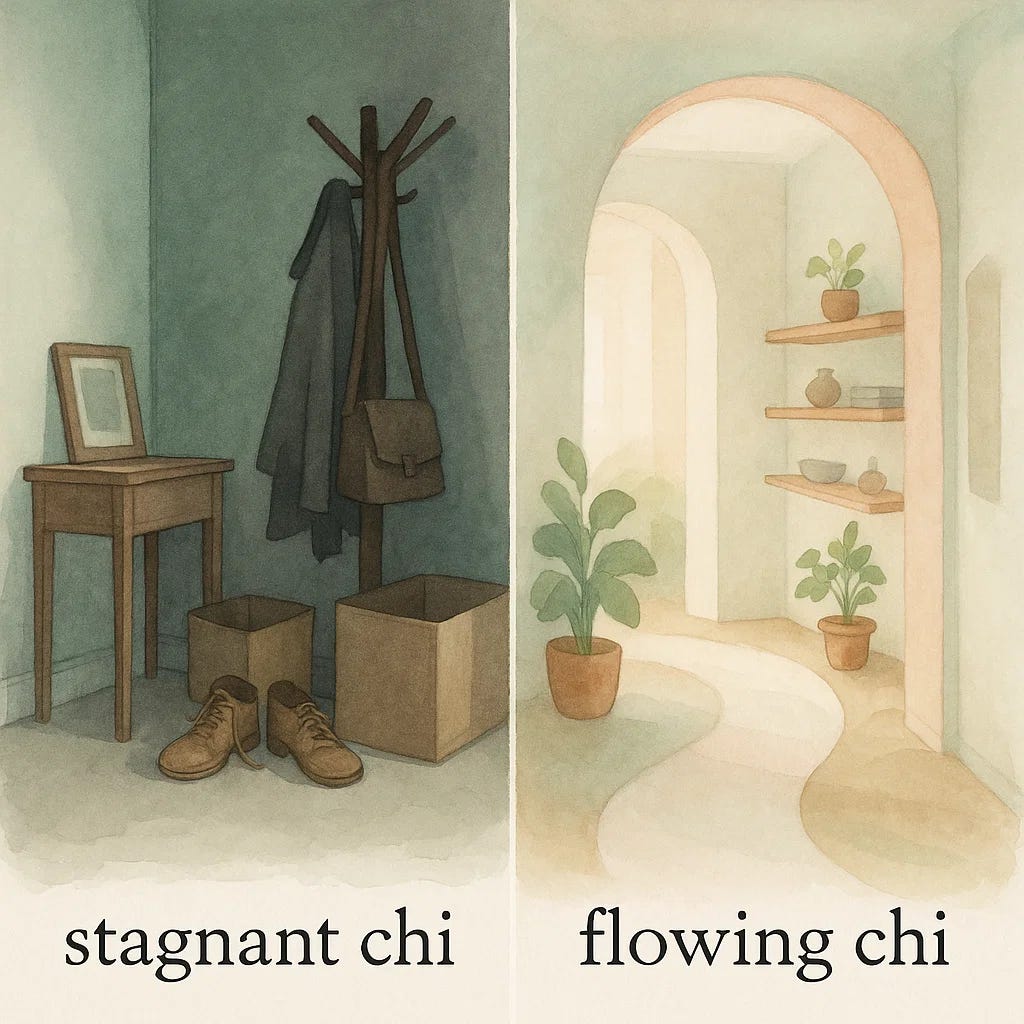Ancient Wisdom for Modern Spaces: Vastu, Feng Shui, and Biogeometry
Growing up, Vastu was a central part of my family.
I used to think it was a little crazy when my mum made us take a compass out before deciding where to place a bed or kitchen in our home. But as I’ve learned more about ancient sciences and how they align with modern research, I’ve come to see the wisdom behind these practices.
Have you ever walked into an old building and felt something intangible but powerful in the energy of the space?
Disciplines like Vastu, Feng Shui, and Biogeometry sought to understand and enhance that energy—balancing the unseen forces of the environment to create harmony and well-being. These systems even address geopathic stresses caused by earth energies, a topic that modern science is only beginning to explore.
Let’s dive deeper into how these practices work, where they overlap, and how they differ, as well as what science has to say about them.
Energy Flow and Geopathic Stresses
Central to all three disciplines is the concept of energy flow. Whether it’s called prana in Vastu, chi in Feng Shui, or the subtle energy fields addressed by Biogeometry, the goal is the same: to create spaces where energy flows freely and supports health.
What is Energy Flow?
Energy flow refers to the movement of invisible life force or vitality through a space. In nature, this energy is balanced, unrestricted, and nourishing. In built environments, however, poor design, clutter, and external disturbances can block or distort this flow, leading to negative effects on our well-being.
Geopathic Stresses
Geopathic stresses occur when the earth’s natural energy fields are disrupted by underground water streams, mineral deposits, or fault lines. These disruptions can:
• Disturb sleep and cause chronic fatigue.
• Weaken the immune system.
• Contribute to stress, anxiety, and long-term health issues like cancer in severe cases.
Scientific Insights:
• Dr. Ernst Hartmann’s research mapped “Hartmann Lines,” showing how disruptions in these natural energy grids correlated with health problems.
• Studies into electromagnetic fields (EMFs) have drawn parallels between geopathic stress zones and biological imbalances.
Vastu, Feng Shui, and Biogeometry all offer strategies to mitigate these stresses, restoring balance and harmony in a space.
Vastu Shastra: Balancing the Elements
Vastu Shastra, or “the science of architecture,” originated in ancient India.
It integrates the five elements—earth, water, fire, air, and space—with directional alignments to optimise the flow of prana (life force) in a space.
Key Concepts:
1️⃣ Placement of rooms and furniture based on cardinal directions.
2️⃣ Balancing the five elements within the layout. For instance, kitchens are placed in the southeast (fire), while bedrooms are located in the southwest (earth) for stability.
3️⃣ Addressing geopathic stresses to ensure harmony.
Feng Shui: Harmonising Chi
Feng Shui, meaning “wind and water,” originated in ancient China and focuses on chi, the life energy that flows through spaces.
By optimising chi flow, Feng Shui aims to create environments that support prosperity, health, and happiness.
Key Concepts:
1️⃣ Bagua Map: A tool used to organise spaces and align them with life areas like health, wealth, and relationships.
2️⃣ Balancing the Five Elements: Wood, fire, earth, metal, and water are used symbolically to harmonise energy.
3️⃣ Command Position: Placing key furniture like beds or desks in positions that provide security and control.
Biogeometry: Balancing Energy Fields
Biogeometry is a modern discipline developed by Dr. Ibrahim Karim, blending ancient wisdom with contemporary science to harmonise energy fields using shapes, patterns, and frequencies.
Key Concepts:
1️⃣ Specific geometric designs, like the golden ratio, balance and enhance energy flow.
2️⃣ Tools and symbols are used to neutralise EMFs and other environmental stressors.
3️⃣ Aligning spaces with universal energy patterns to support vitality.
Where They Overlap and Differ
While Vastu, Feng Shui, and Biogeometry share the goal of creating harmonious spaces, their approaches vary:
• Vastu focuses on balancing elements and directional alignments to optimise prana flow.
• Feng Shui emphasises chi flow through spatial arrangements, decluttering, and symbolic elements.
• Biogeometry uses modern tools and shapes to neutralise environmental disruptions like EMFs.
Despite these differences, they all highlight the profound connection between our environment and our health.
Ancient sciences like Vastu, Feng Shui, and Biogeometry remind us that our homes are more than just shelters—they’re ecosystems that influence our well-being. These disciplines offer timeless insights that remain relevant, even in today’s fast-paced world.
In future posts, I’ll explore practical ways to apply these principles, helping you create spaces that feel balanced, energised, and deeply connected to nature.
Your home can be more than a place to live—it can be a space that truly supports you.







